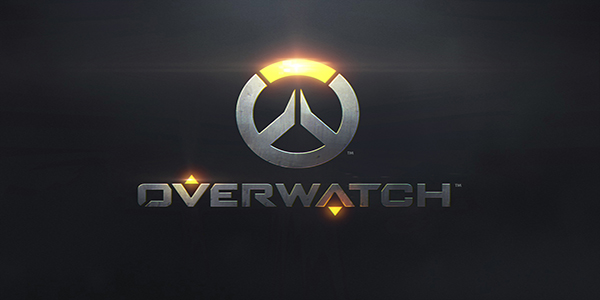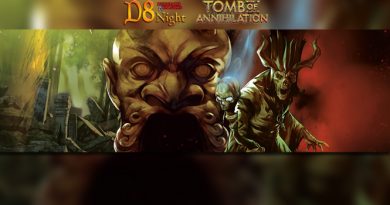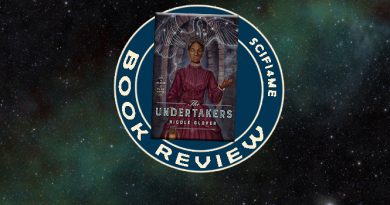Review: OVERWATCH – Are You With Us?

[All images courtesy Blizzard Entertainment]
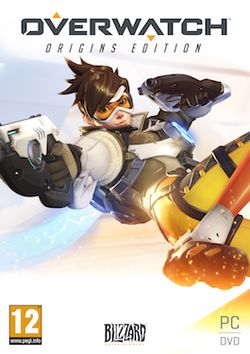 Overwatch
Overwatch
Developed by Blizzard Entertainment
Available on XBox One, PS4, and Windows
Reviewed on PC
Released on May 24, 2016
Disclosure: Game Purchased
The moment my side iron drew from my holster as the clock struck twelve and a lonely tumbleweed rumbled by, I was immediately addicted. This is rather strange for me, really. I don’t generally gravitate towards first-person shooters nor do I tend to enjoy player vs player interactions. I’m, on the whole, a player(s) versus environment gamer. But there is something special to Overwatch.
The more I researched the making of the game (listening to lectures and presentations by the game’s artists and developers), the more I started to understand exactly what it is that brings me back into the fray match after match.[su_pullquote align=”right”]It feels like you are playing in a graphic novel or an extremely well-made animated Disney or DreamWorks movie where “Heroes never die … for a price”.[/su_pullquote]
I’d like to preface this article a little bit by stating I’m terrible at first-person shooters and PVP based games. I really am. And generally, I get burnt out on the genre rather quickly. You can only be ground into the dirt by so many heels before it starts getting a little old. In many cases it’s the extremely toxic and hostile communities that tend to be full of griefers and trolls.
Other times in games — for example, Titanfall — I tend to spend a much greater time being dead than I do actually playing the game. I remember one match in Titanfall where I had only thirty seconds of time spent alive to around five minutes of time spent dead sitting in the re-spawn waiting room. Not my idea of fun. I paid to play these games, not sit in a lobby watching a timer.
Related: Titanfall Review
Related: Titanfall 2 announced
There is something about Overwatch that is different than other games in the same genre, such as Team Fortress 2. Most of the time, these types games are marketed towards a single demographic of gamers. In Bartle’s Taxonomy of players, this player archetype is known as Killers.
In brief, killers are players that enjoy disrupting the actions and agency of other players. Examples of killer-focused games are Counter Strike: Go, Call of Duty, Battle Field, and even battle arena games such as League of Legends and DotA2. These games really know their audience and how to captivate them into hours upon hours of game play through their player vs player designs. But for those of us that are outside of the killer spectrum, these games can be incredibly hard to enter and even more difficult to stay into and excited about for the long term.
To be honest, I don’t quite know exactly what Overwatch is doing differently to lower the entry fee for non-killer archetype players. I can only imagine how hard it must be to keep Overwatch open to everyone and not just the die hard player vs player fans. I know that the game has both achievements and cosmetic items (like skins, sprays, and the like) that would appeal to the achiever type (collect and do all the things) and social type (fashion through skins), but it’s hard to pinpoint what else there is for the rest of the orthogonal spectrum. The game does a great job of putting a focus on teamwork while emphasizing mixing chance and skill based gameplay (that mixture is aimed at leveling the field between players of all skill levels).
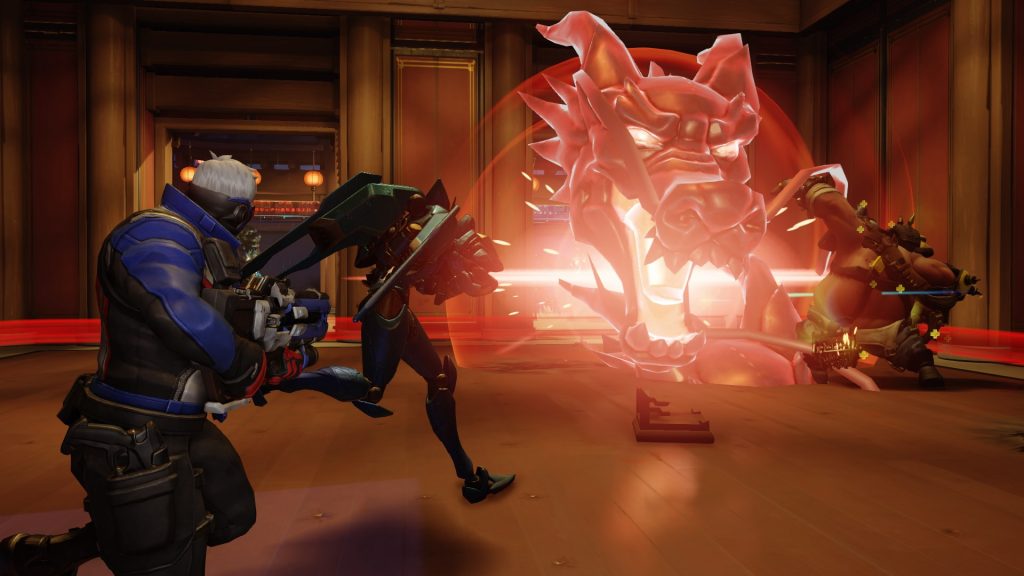
Lore is definitely something that one could point at as an outreach to the explorer based players. Though, like other non-story telling games — particularly Destiny and to a lesser extent, DOOM — the story of the game lays far and removed from actual gameplay. However, where games like Destiny fall short, Blizzard offers extremely beautiful cinematic short films (as well as comics, story boards, and other promotional materials) to bring players into the lore and history of Overwatch.
Related: Destiny Review
As reported on by Kotaku, officials at Blizzard have stated that there will not be a single player story campaign. (Though I would absolutely love a separate co-op story driven Overwatch game). But this doesn’t mean that the game “feels” like it is devoid of story.
Unlike in Destiny, where the player feels left out a story that should be rich and deeply immersive, the Ovewratch story feels like it has a lot of impact. It feels deep and well fleshed out. Granted, it sometimes is predictable (Hanzo will fight his brother Genji, Junkrat and Roadhog will wreak havoc, Winston and Reaper fight, Tracer and Widowmaker will fight), but even still, the Pixar-level short films with the emotion rich environments and characters are enthralling. I still want Blizzard’s cinematics department to make a full feature length film.
Even more, the story becomes further immersive inside the actual game as the characters will share dialogue lines between each other and the maps are altered to reflect the events that unfold in the short films (for example, arrows and damage can be seen inside the castle at Hanamura, a statue to the omnic religious figure that is assassinated by Widowmaker is found in the London map).
One of the major aspects of Ovewratch that really appeals to me, though, is the art found within the game. Overwatch, more so than most modern ‘AAA’ games — especially of this genre — really pops. Everything from the art style in the maps and level designs to the character artwork is colorful and and thrilling.
This is during a time where other games in the FPS PVP genre are stuck in drab pallets ranging from rust to more rust. (The new Doom’s environment design and Battlefield 1 may be rare exceptions.) Overwatch feels engaging and well crafted. It feels like you are playing in a graphic novel or an extremely well made animated Disney or DreamWorks movie where “Heroes never die … for a price.”
Related: Another game full of color, Fallout 4
What really catches my eye, though, is the animation. This game is probably one of the best animated games I have ever seen. From the Game Developers Conference 2016 talk “Animation Bootcamp: How a Hero is Mei-d” (video of the lecture below), I got to see a behind the scenes look at a few of the animation and modeling techniques animators use, as well as a workflow pipeline for modeling and animation at Blizzard, and it was absolutely captivating.
I was astounded to find out that Overwatch was using a system called “noodle bones” to move the models, which is usually a technique reserved for cinema, not games. It allows for extreme control of character animations that follow the art technique of squash and stretch within a range of movement between frames.
Audio is also an integral part of Overwatch. Every single fine detail has it’s own audio cues and distinct sounds. From hitting an enemy with your attack to sleeping bombs that quietly tick their way to detonation, Overwatch is rife with sound. The game’s audio is even linked to the fast paced gameplay mechanics as characters will shout out special abilities they unleash. If you aren’t paying attention (or are playing the game on mute), you can easily be caught unaware by a tire-bomb or a trick sixshooter.
As much as I gush in overflowing love for the bright and shiny gameplay, it does have some flaws. Not big flaws mind you, it is just me nit picking, but the flaws are there. [su_pullquote align=”right”]Really, the entry fee and micro-transaction fest is Overwatch’s largest glaring flaw.[/su_pullquote]The first flaw is something that will smooth out over time. There’s a lack of play modes and maps. Blizzard does promise new maps and heroes for free as they become available. (Currently a new character, Ana, can be played on the Public Test Servers).
That isn’t to say what available currently is insufficient: the maps are incredibly well made and tweaked to perfection. The level of strategy in every location node is fine tuned for the super fast paced game play. On top of that, the maps themselves are things of beauty. They are all visually stunning and incredibly distinct. You can visually tell that you are in Nepal or Mumbai.
In other PVP arena games, if they have more than one map, you generally can’t distinguish between each one because they are all the same color pallets of rust, dirt, and more rust. There are about twelve maps. And that is a lot. But in a game that constantly plays map after map with no prolonged exploration or story mission to drive you through different sections to keep it fresh, the maps in this genre get stale and overplayed very quickly.
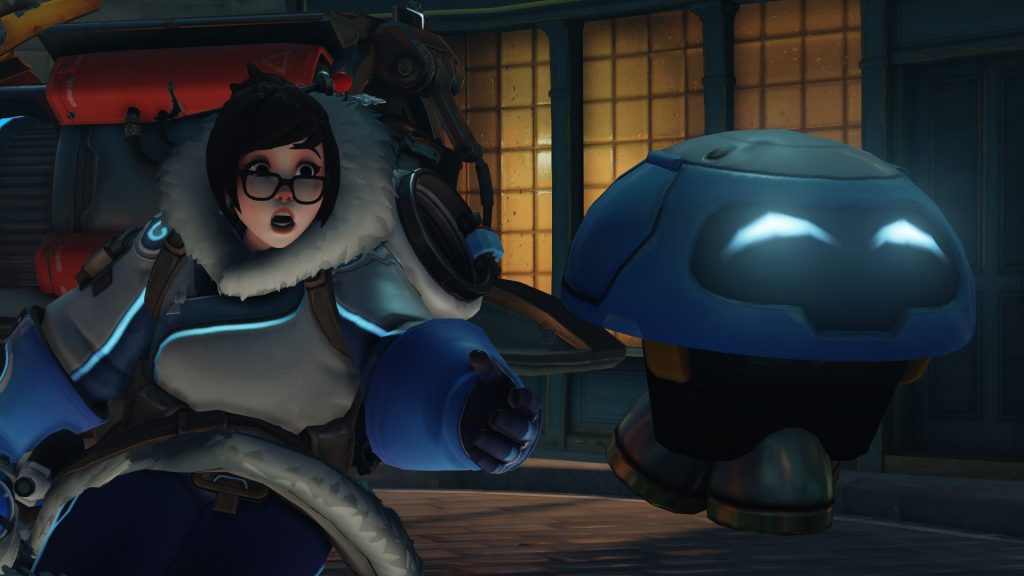
There exist four distinct modes: capture the point, push the payload, king of the hill, and hybrid capture the point then push the payload. My favorite maps are the king of the hill map, where both teams are tasked with capturing and holding the same objective location as it tends to somewhat avoid the war of arbitration that the other modes seem subject to. I’m really hoping that the future of Overwatch includes more objective driven maps rather than mindless skirmish style gameplay.
There are some interesting choices in the departments of marketing and progression that are a slight bit odd and somewhat off putting. The first of these is the game’s market strategy. The biggest drawback to Overwatch is the fact that the game is both a premium priced game (ranging from $39.99 – $59.99 for the base copy) with microtransactions sprinkled in the mix of it. Yes, there is an entry fee at the door and additional fees once you are inside.
Granted, these additional microtransaction fees are completely optional, but as it is linked to the cosmetic progression system, every time you reach a new notch on the progression track, you are teased with the option to spend more cash.
So lets talk progression as it relates to the game’s microtransactions. One of the good things about this system is that it is entirely cosmetic. Overwatch has no meta game, one of the saving graces in Blizzard’s take of the genre. In other games, microtransactions are linked to the best game-breaking instant win weapons or randomly selected throws of bonus points to make you better and stronger than those players that don’t pay the extra fees for the extra points. Keeping both progression and microtransaction content to cosmetic changes was an extremely smart move on Blizzard’s part. Smart, because it keeps the entry bar level so players with money don’t stomp all over on the players without.
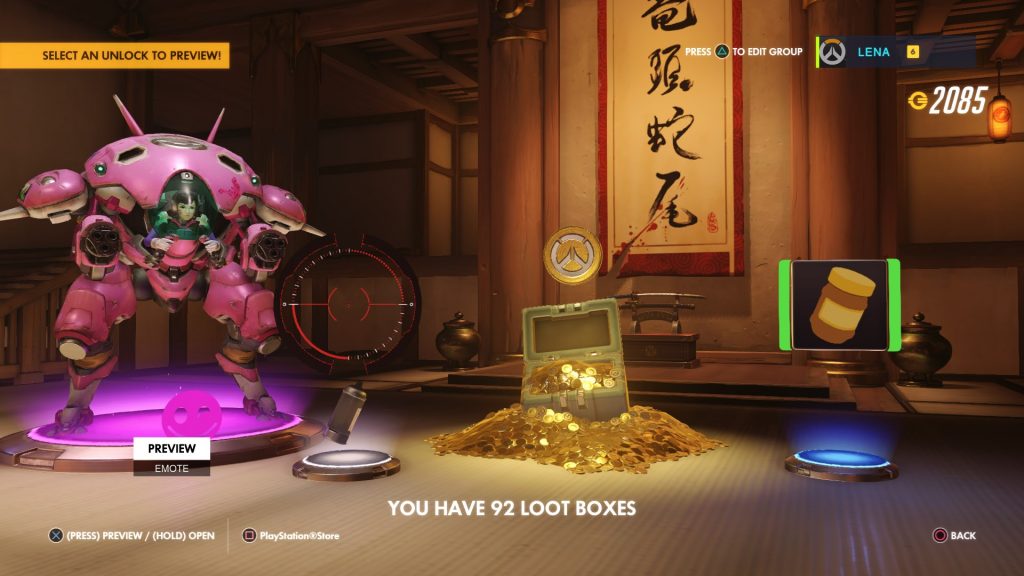
But with this in mind, the microtransaction system has some malicious design baked into the system to entice players to shell out those little chunks of cash. Because it’s linked to progression, the game follows the “first taste is free” business model.
[su_spoiler title=”Breaking Down the Loot Box Cycle:” style=”fancy” icon=”chevron”]
- You get a “loot box” every time you level up.
- Loot boxes contain a random assortment of five cosmetic items
- Cosmetic items range from trash sprays and icons to full coveted re-skins of characters
- The probability is adjusted so “do want” skins have an incredibly low drop rate
- Meanwhile, “trash” sprays and other junk drop constantly
- There can be duplicates, and there’s a high chance for duplicates
- Boxes have extremely high chances to drop trash items and lower chances for better rewards
- Boxes can can contain “coins” which are spent to buy items directly
- Duplicates give coins, but at a laughably low exchange rate.
- Example: legendary skin cost 1,000 coins. Getting a duplicate legendary skin gives you 200 coins. Getting a legendary drop of coins is 500
- Duplicate items happen more often than not
- You level quickly from levels 1-15 then slow down at an alarming rate each level up.
- At level 22, the leveling is slowed to maximum slowness
- Levels are reset at every 100th level
- You can see everybody else’s skins, making you want the coolest ones.
- Every time you look at your loot boxes, the button to buy more is displayed
- You REALLY want to push that button … more boxes is more shiny legendary skins, right?
- Rinse and repeat
[/su_spoiler]
This system is in place to make the cosmetics a valuable commodity. Players want to play these games and they want to look cool doing it. When you look at your team, you can’t help but gawk at Mercy’s devil horns or Roadhog’s shark costume and think, “Wow, those are awesome, I want those.” Even in the beta, I played a mountain of matches for Hanzo’s okami skin (a wolf costume, and it also replaces all his dragon moves with wolf equivalents).
[su_spoiler title=”A side note on skins” style=”fancy” icon=”chevron”]Hanzo’s wolf skin is the only legendary skin that change both the audio and visual style of his abilities. No other hero skin has that. It’s kind of disappointing, really. [/su_spoiler]
So wrapping it all up, the game incentives players to spend money on the in game purchases with a carrot and stick.
The carrot is the shiny skins, animations, and voice lines that other players have unlocked. You want those items.
The stick is the terrible probabilities of actually getting what you want with the loot box’s low drop rates and the pittance of trash rewards that trickle your way, all the while making the “pay money” option look like the best route for those special shiny unlocks…. But even if you do pay money, it still is the same random crapshoot you get without spending money, just a great deal more of it. A recent episode of the Jimquisition explores Overwatch’s payment system in greater depth.
(Caution: strong language)
Really, the entry fee and microtransaction fest is Overwatch’s largest glaring flaw. Overall, gameplay is incredibly smooth and streamlined. This is true not only for a Blizzard title, but also for a game with this high octane twitch happy competitive mettle. The mechanics of the game are well balanced. The developers take time to talk to the community both on the game’s forums and in videos, listening to the players and making fixes that Blizzard’s own data backs up. The animations are crisp and fresh and free of lag. Character design, although nothing dramatically original mechanically speaking (yet), still feels vibrant and fresh. It is a highly-polished game that was witness to Blizzard’s smoothest launch in the company’s history.
Related: Diablo 3 Squashes the Bug
In conclusion, even though the game isn’t the genre that I typically enjoy, I can’t put it down. I’m stunned by the fantastically smooth animation in Overwatch. The fact that it uses the best techniques of squash and stretch create a glorious visual experience.
Even though the game world is set in an dystopian future, the colors are bright and vibrant. These colors convey more a world of hope and virtue than the cliche decay and disrepair.
The servers are clean and latency is relatively low for a game of this speed. The community is (for the most part) welcoming and the gameplay is as fantastic as it is frantic. The gun battles are intense and never quite predictable. I have been enjoying this game thoroughly since the closed beta to current.
Rating: 8.5. Heroes never die … for a price.
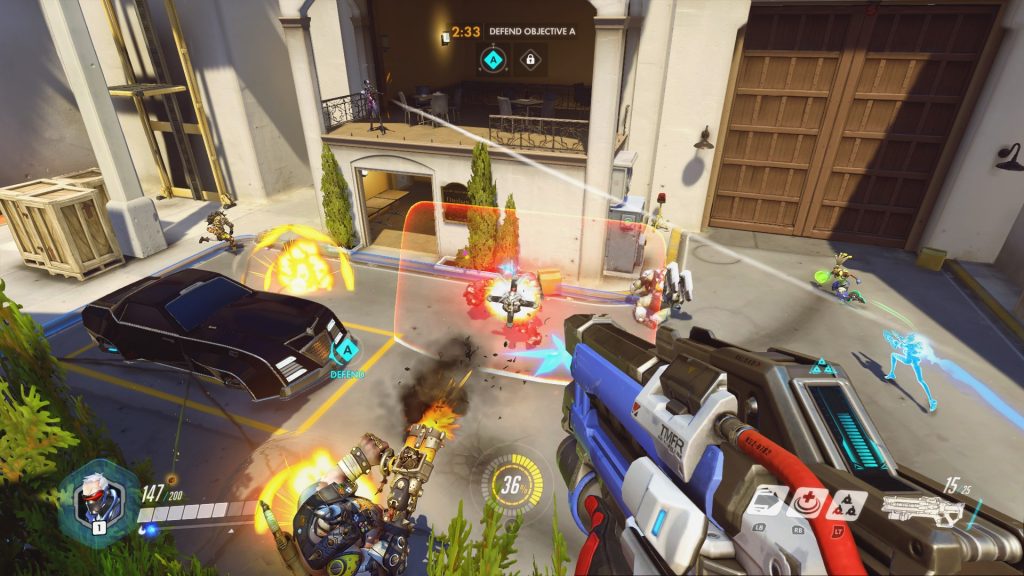
It will be very interesting to see what Blizzard does with the game from here. With the promise free updates of characters and maps, I am quite excited for Overwatch‘s future. I also hope Blizzard continues to make the fantastic film shorts, comics, and other story lore building elements. They have been sprinkling these about during their pre-launch marketing campaign, and I’ve been rather enjoying them.
Since writing this article, Blizzard has just launched Overwatch‘s competitive play mode. As stated above, I’m particularly not great with first-person shooters. Nor player vs player games, for that matter. Competitive mode currently doesn’t really hold much interest in me, although I did dabble a little with the competitive play mode. It needs a great deal of improvement to be viable to a more general audience.
It feels like it favors only victors. Only the top echelon of the competitive players can actually use the system. There is very little (or nothing at all) for those of us who are mediocre or below. However, since the mode is so new, it’s hard to get a full read on situation. It will be interesting to see how Overwatch evolves over time.
Are you playing Overwatch? Have any highlights or “Play of the Game”s to share? Any opinions on Blizzard’s newest IP? We’d like to know! Leave a comment below. For more information about the game, visit the Blizzard Entertainment website.
![]()

